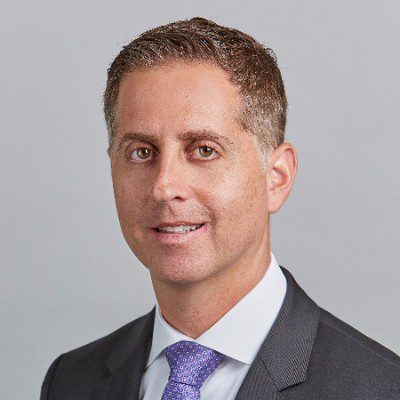
A partner with Guidehouse, John Saad leads the Defense and Security Segment. There’s a lot going on there: Guidehouse recently combined its national security and defense practices. In addition, the consultancy recently acquired Grant Thornton’s public sector advisory practice.
Saad supports the missions of the Defense Department, in addition to the intelligence community and the departments of Homeland Security, Justice and State. We caught up with him to talk about his work at Guidehouse and what he sees happening in the defense marketplace.
You’re leading a new combined segment made up of the national security and defense practices. Why was that formed?
We put those two businesses together because there’s a lot of synergy between them. The mission sets overlap pretty significantly. The skill sets that we use to solve our clients’ most challenging and complex problems ⏤ whether those are in management consulting, technology consulting in the digital realm ⏤ have a lot of consistency.
Putting them together, having more critical mass and being able to realign the resources as needed, made a lot of sense to us. And it’s consistent with some of the competition in the marketplace and how they’re organized.
You’re also supporting the addition of the Grant Thornton public sector practice. What’s happening there?
We’re really thrilled to be able to bring roughly 1,200 colleagues over from Grant Thornton’s public sector consulting practice into Guidehouse. A large portion of those individuals actually serve homeland security and defense clients, and I am thrilled to be able to welcome them to our team.
They bring deep capabilities in consulting in a range of mission and mission support areas. That’s very complementary to a lot of the work that we’re doing. They come with a very similar corporate culture, which makes it really easy to jump right in and start collaborating from day one, and we have already seen numerous examples of this.
You’ve worked with DOD on climate change, COVID, data analytics and digital transformation. What common themes emerge?
Our clients are facing a continually changing threat landscape. As we see every day on the news, our adversaries are getting more sophisticated and are looking for more ways to impact us. So, there’s multiple threat vectors that we’re working on that require us to use a range of skills, tools and capabilities to put our clients in the best position for mission success
Right now in defense and national security, every challenge has to be approached by a combination of skill sets, whether they be management, consulting, technology, sustainability, financial management, identity and access management. The challenges today require a team of experts who can surround an issue from all these perspectives.
How does Guidehouse help?
We’ve positioned ourselves very prominently as being here to solve our clients’ most complex mission challenges. In defense, they no longer just need a government contractor: They need a professional services firm that brings to bear a range of capabilities and perspectives from across the government and commercial industries.
We also try to position ourselves to be the “first call” for our clients, to have a voice in the discussion. We don’t necessarily always get the engagement, but we want to be able to share a perspective on how we would think we could solve a problem, working hand in hand with them. This has led to some very strategic efforts in support of our clients.
What’s the biggest business challenge you face, and how do you address it?
The most important thing that I’m focused on now is fully integrating all the capabilities that we have between our defense and national security business. I’m also bringing in our colleagues and capabilities from Grant Thornton public sector, and making sure that we’re operating in unison in the market as opposed to discreet groups.
It starts with communication: Making sure that you’re having communication at all levels of the organization; that you’re being consistent in your messaging; that you’re addressing any challenges head on as early as possible; that you’re looking forward to what the opportunities and benefits of the new organizational structure are and really championing those things.
I am having a lot of one-on-one discussions, a lot of group meetings, a lot of written communication, and I’m making sure that I’m as visible as necessary, along with my leadership team. That shows that we’re fully supportive of the value that this collaboration and new business model can bring, not only to the people of our organization, but most importantly, to our clients and to the defense and security community.
It is also important that we clearly articulate our unique combined capabilities to our clients and demonstrate the range and depth of support Guidehouse can offer.
You’ve been in the GovCon world for about 20 years. What makes this work interesting and exciting for you?
I hadn’t even contemplated the GovCon world until I was asked to support the 9/11 victim compensation program early on in my career. On the heels of the 9/11 Victim Compensation Fund, DHS was being stood up and there were a lot of opportunities to bring commercial best practices and capabilities to this new agency. I was fortunate to support that in various roles as a consultant.
That really changed my mindset about the mission of public service and working with the government on some of its most complex missions and challenges. I just find the scale, the complexity, the impact and the importance of the mission of defense and national security to be something that I’m very proud to support.
I also love the fact that while there’s a lot of competition in this market, we all ultimately want what’s best for our defensive security apparatus and our government. The companies that we compete with, we also partner with. It’s all for the greater good.

